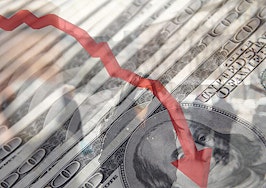There’s an overwhelming amount of data and headlines circulating. This column is my attempt to make sense of it all for you, the real estate professional, from an overall economic standpoint.
Today, let’s take a look at the new-home market and how it has performed over the past couple of decades as well as what we can expect in the future.
Some context
Sales rose significantly in the early 2000s — peaking at almost 1.3 million units in 2006 — before pulling back quite significantly as cracks started to appear in the overall housing market.
Sales dropped to a low of just 306,000 units in 2011 — less than a third of the pre-bubble average — before starting to pick back up the following year.
Although sales have continued to rise since 2012, the pace of growth can be best described as lackluster, with total sales last year coming in at just 682,000.
Why hasn’t construction activity gone back to pre-recession levels?
Census Bureau data shows that the number of households in the U.S. between 2012-2019 grew by 10 million new households.
So, where are all these people living?
According to Census data, up until the end of 2016, the vast majority of new households were living in rentals.
In 2017, new owner households started to exceed new renter households. We’ve actually seen a net loss of renter households across the country.
Clearly the demand for homes has gone up, lending to an increase in home prices, which begs the question: Why have builders not been delivering far more product if there’s a demand?
Why aren’t there more new houses?
There are four major factors that influence building homes: land, labor, material costs and regulatory fees. These are certainly not the only factors that homebuilders consider though.
Land
Land prices, especially in coastal areas, have continued to escalate, and in many markets, there are significant laws about where you can and cannot build homes.
By limiting the amount of land on which to build, especially in highly populated areas, land prices rise, which pushes up housing prices.
Labor
Employment in single-family residential construction peaked in 2006 at a little over 635,000.
Between early 2006-2011, the number of workers dropped, with the industry losing over 357,000 workers.
Even when the economic recovery started, builders never got those workers back as they had either left the industry completely or joined other companies.
The number of single-family construction workers today is down by over a quarter million when compared to the pre-bubble peak, which is problematic because the job market remains tight and puts upward pressure on wages, causing more expense to builders that passes on to consumers.
Material costs
The market has gone through a period of significant price increases for materials. There has been some softening recently, but prices are still running very hot.
Again, higher costs put upward pressure on home prices.
Regulatory fees
According to the National Association of Homebuilders, regulatory fees account for 25 percent of the final price of a single-family home.
When you combine all these costs, a builder sees the price that the home has to sell for to justify building it.
If the house is simply too expensive, relative to the market, the builder won’t build it. And when new homes aren’t built, then we end up with a shortfall in new housing production.
Is it fixable?
Material costs did see the first January to March drop since the Great Recession, so there is hope, but we need to make some sizable changes in the other cost centers.
Zoning codes need to be revisited. We need more people to get into the trades that build homes, and cities need to look at how they can reduce fees for builders to address affordability.
To conclude, the country has a severe shortage of housing, and this has put significant upward pressure on home prices, which in turn has created an affordable housing crisis.
I believe that housing is a fundamental right, and we need to find appropriate ways to grow our housing stock and move back toward balance in the ownership housing market. I believe it can be done, but it will take a lot of work from both the private and public sectors.
Matthew Gardner is the chief economist for Windermere Real Estate, the second largest regional real estate company in the nation.











